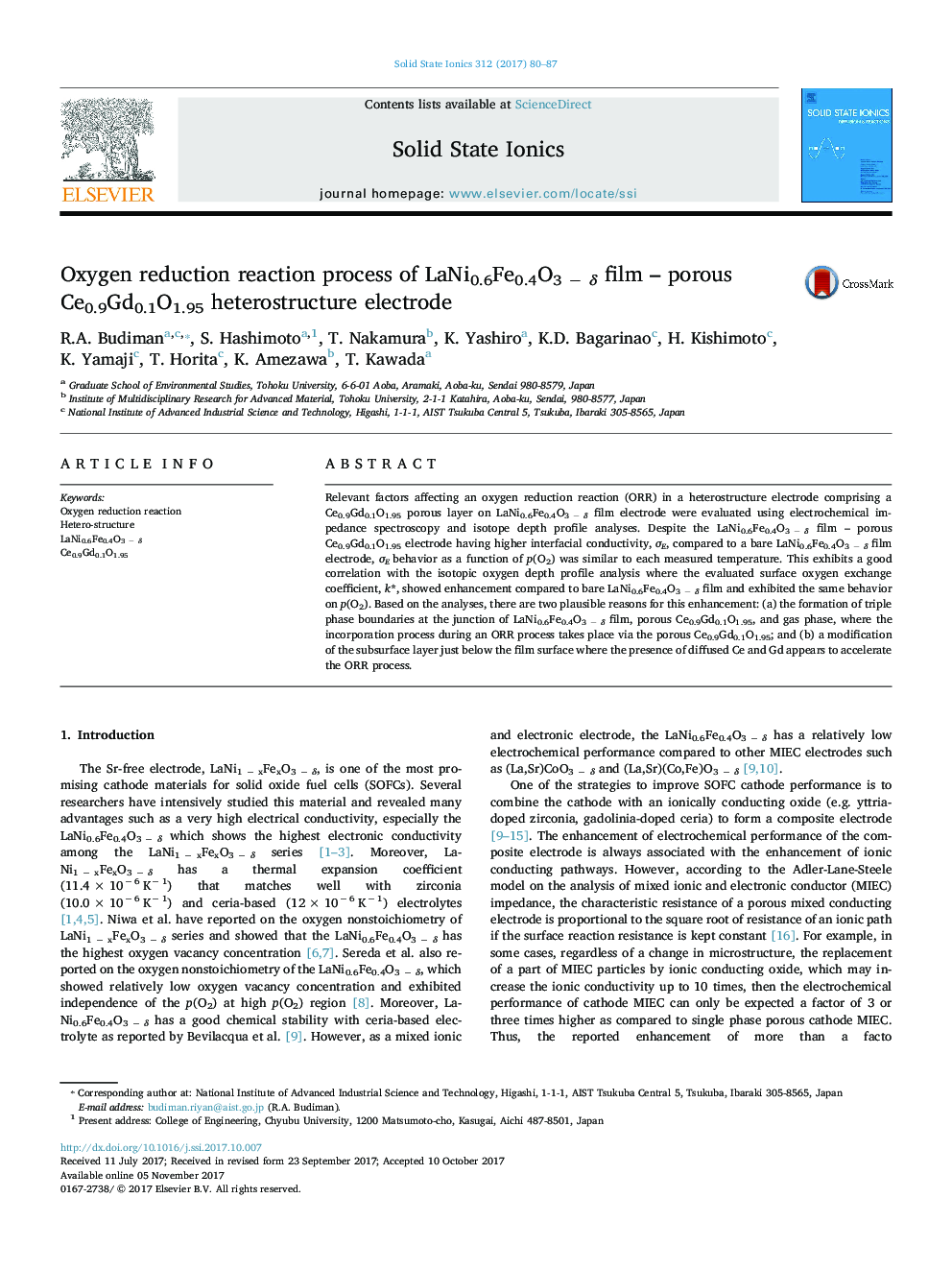| Article ID | Journal | Published Year | Pages | File Type |
|---|---|---|---|---|
| 7744845 | Solid State Ionics | 2017 | 8 Pages |
Abstract
Relevant factors affecting an oxygen reduction reaction (ORR) in a heterostructure electrode comprising a Ce0.9Gd0.1O1.95 porous layer on LaNi0.6Fe0.4O3 â δ film electrode were evaluated using electrochemical impedance spectroscopy and isotope depth profile analyses. Despite the LaNi0.6Fe0.4O3 â δ film - porous Ce0.9Gd0.1O1.95 electrode having higher interfacial conductivity, ÏE, compared to a bare LaNi0.6Fe0.4O3 â δ film electrode, ÏE behavior as a function of p(O2) was similar to each measured temperature. This exhibits a good correlation with the isotopic oxygen depth profile analysis where the evaluated surface oxygen exchange coefficient, k*, showed enhancement compared to bare LaNi0.6Fe0.4O3 â δ film and exhibited the same behavior on p(O2). Based on the analyses, there are two plausible reasons for this enhancement: (a) the formation of triple phase boundaries at the junction of LaNi0.6Fe0.4O3 â δ film, porous Ce0.9Gd0.1O1.95, and gas phase, where the incorporation process during an ORR process takes place via the porous Ce0.9Gd0.1O1.95; and (b) a modification of the subsurface layer just below the film surface where the presence of diffused Ce and Gd appears to accelerate the ORR process.
Related Topics
Physical Sciences and Engineering
Chemistry
Electrochemistry
Authors
R.A. Budiman, S. Hashimoto, T. Nakamura, K. Yashiro, K.D. Bagarinao, H. Kishimoto, K. Yamaji, T. Horita, K. Amezawa, T. Kawada,
